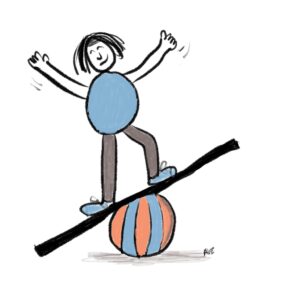
In the relentless whirlwind of modern life, stress becomes a constant companion, demanding our attention and energy. From juggling work pressures, climate changes, political polarization, and family responsibilities, the list seems endless. Stress, in moderation, is a natural response and can support growth, but when it becomes overwhelming, it exacts a high cost to our wellbeing. However, amid this chaos lies a potent remedy often overlooked – the power of rest and relaxation.
I must confess; I was once among those who failed to grasp the importance of intentional downtime. Like many of my clients, I believed there was never enough time to pause and recharge. The allure of productivity and societal expectations nudged me away from the essential need for rest and relaxation.
Yet, as I delved deeper into the research, I discovered a surprising truth: we are actually more productive and experience more joy when we make time for play, rest, and rejuvenation. Our human system is designed to allow space for recovery and replenishment. Like a battery, we need to recharge. By embracing restful activities such as being in nature, reading, or taking walks, we grant ourselves the gift of renewed energy and a broadened perspective.
I have personally experienced the transformative effects of incorporating rest into my life. Engaging in activities like connecting with a friend, sketching, listening to a podcast or immersing myself in art has boosted my productivity and creativity. Even dedicating a few minutes to breathing exercises or yoga has remarkably enhanced my energy levels.
Furthermore, we need to consider the impact of stress on our immune system. Persistent stress weakens our body’s defenses, making us more susceptible to illness. The antidote lies in mindfulness and being present in the moment. We foster a greater sense of calm, wellbeing, and joy by taking time out to experience the present fully and let go of the burden of past and future worries.
As an executive coach, I have witnessed a remarkable transformation in my clients as they embraced the power of rest and relaxation. What was once perceived as indulgence is now understood as an investment in their overall JOYBeing–their joy in being alive. The ripple effect is palpable; those around them benefit from their positive disposition and contagious energy.
In a world where unplugging seems impossible, I invite you to trust in the power of rest and relaxation. Allow yourself the time and space to rejuvenate and observe the profound impact it has on your life. As you embrace the art of rest, may you experience a newfound sense of ease, joy, and resilience. Remember, in these moments of rest, we truly find the strength to be resilient and thrive in the face of life’s challenges.
I would love to hear about your experience of taking time for rest and rejuvenation. Do you find it hard to take a break, like I and my clients have?









